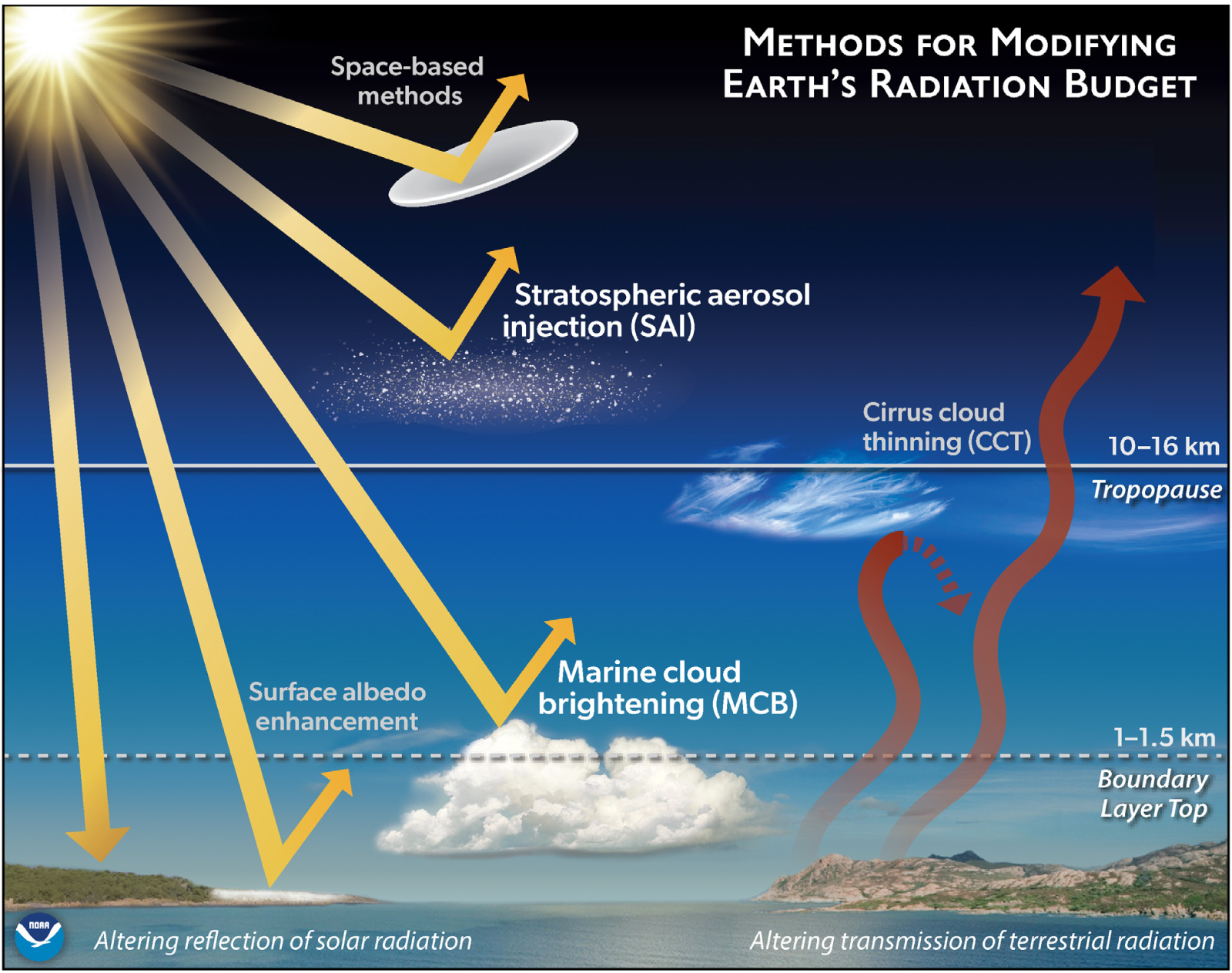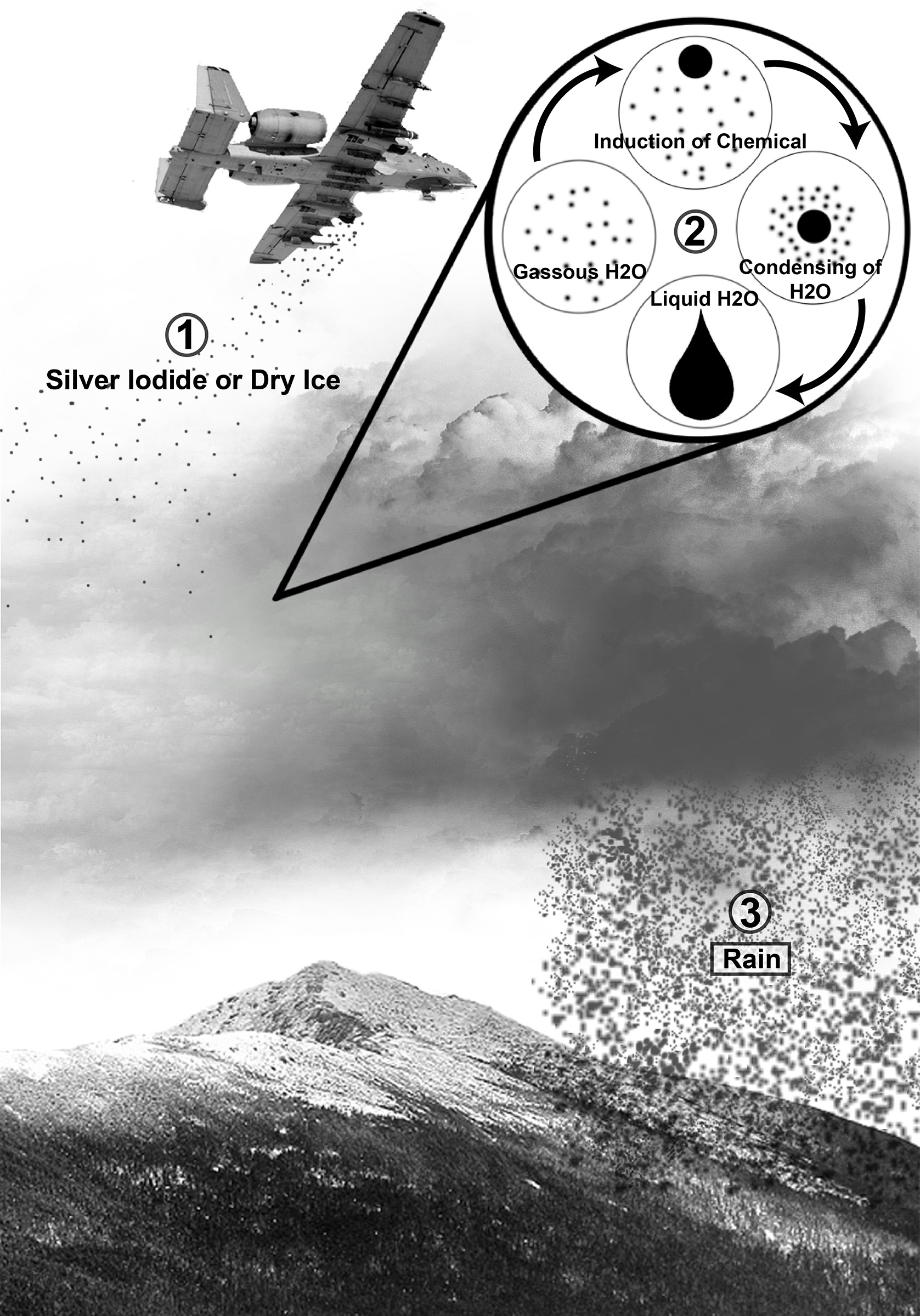Techniques to deliberately alter Earth’s climate, such as geoengineering and cloud seeding, have been in the news following the devastating floods in Texas. While these approaches offer the potential for rapid responses to certain climate risks, they also come with significant uncertainties, ethical considerations, and risks of unintended environmental consequences. In the interview below, Kara D. Lamb, an associate research scientist in the Department of Earth and Environmental Engineering, introduces the science underlying geoengineering and weather modification and discusses their implications for future climate mitigation strategies.
What is geoengineering?
Climate geoengineering refers to a number of large-scale techniques that are used to try to reduce the impacts of climate change. Some methods focus on the reduction of greenhouse gases in the atmosphere, such as through direct carbon capture or approaches that target methane, a powerful greenhouse gas. Another set of methods, referred to under the umbrella of Solar Radiation Management (SRM), aim to increase the reflection of sunlight from the Earth’s atmosphere in order to cool the Earth’s climate. The most studied of these methods is stratospheric aerosol injection, which proposes to put sulfate aerosols high up in the Earth’s atmosphere to cool the climate (this is similar to the cooling effect that is observed after a large volcanic eruption, such as Mount Pinatubo in 1991). Another method that is widely studied is marine cloud brightening. This technique targets low clouds that form over the oceans, and proposes to make these clouds brighter so that more sunlight is reflected back to space. SRM methods have mostly been studied through modeling or in the laboratory, and have not been deployed in the atmosphere at any significant scale.

Stratospheric aerosol injection (SAI): a strategy for increasing the number of small reflective aerosols in the stratosphere to increase the reflection of incoming sunlight.
Marine cloud brightening (MCB): a strategy for adding aerosol to the lower atmosphere over ocean regions to increase the reflectivity of low-lying marine clouds.
Cirrus cloud thinning (CCT): a strategy for modifying the properties of high altitude ice clouds to increase the transmission of outgoing terrestrial radiation to space.
Space-based methods: proposed methods have primarily considered large “mirrors” in space to reflect sunlight.
Surface albedo enhancement: increasing the reflectivity of surfaces through, for example, white roofs or land-cover changes.
What is cloud seeding, and how commonly is it practiced today?
Cloud seeding to increase precipitation and snowpack has been around since the 1940’s. This is typically referred to as “weather modification”, since the focus is on a short term (on the scale of hours) increase in rainfall or snow. It’s used in a number of Western US states where there are concerns around drought, as well as in many other countries around the world.

There are a number of different weather modification methods and approaches. Earlier this year, my colleague Jared Donohue and I conducted a research study to create an accessible dataset of recent weather modification usage in the United States by compiling publicly available records. Our paper is still under review, but we found that the most common approach in the Western US has been to use silver iodide deployed by either airplane or ground-based cannons for the purpose of increasing snowpack. The silver iodide particles disperse in the cloud, and in certain conditions, can slightly increase the amount of precipitation (snow or rain) that results.
How effective is cloud seeding, and could it contribute to flooding or other weather extremes?
It’s difficult to say exactly how well cloud seeding works, because the weather naturally varies a lot, and exact rainfall or snowfall amounts in a given area are difficult to predict. But based on what we know about how clouds and rain form, cloud seeding doesn’t cause a significant increase in precipitation. Most studies suggest it may increase precipitation by only 5-15%, compared to what would happen without cloud seeding.
What issues emerge when we consider using geoengineering to manipulate Earth’s climate?
We know that SRM will not simply cancel out the effects of warming due to greenhouse gases (the atmosphere is much more complex than this), so it isn’t a replacement for reducing greenhouse gas emissions. And there are ethical concerns because there is the potential for SRM to benefit some regions more than others. Our current models are not accurate enough for us to fully understand and predict what these regional effects might be, so there’s a need for both improved scientific understanding as well as a governance framework to deal with these types of challenges.
Is geoengineering a promising approach to address climate change?
There has been renewed interest in climate geoengineering as a potential way to reduce the immediate impacts of climate change, while longer term solutions for greenhouse gas reduction are sought. Though there’s still a lot we need to learn, doing research in this area helps us better understand how the atmosphere works, which is important for understanding both weather and climate. So, these areas definitely warrant further research, but we are not yet at the stage where we should consider employing geoengineering at scale, and it shouldn’t become a distraction from the need to reduce greenhouse gases.
Source link
Jeremy Hinsdale news.climate.columbia.edu

